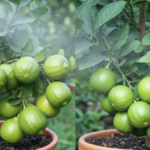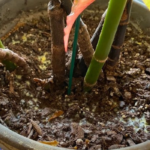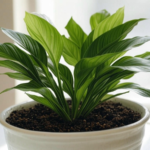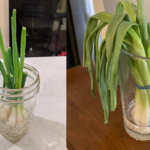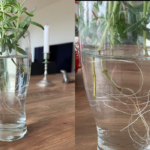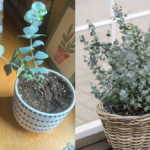Fiddle leaf fig care guide is all about balancing the right amount of light, water, humidity, and soil. Known for their large, violin-shaped leaves and stylish indoor appeal, fiddle leaf figs (Ficus lyrata) are one of the most popular houseplants worldwide. While they can be a little demanding, proper care will help them thrive beautifully in your home.
I’ve been growing fiddle leaf figs for over three years. In the beginning, I struggled with dropping leaves and brown edges. But after some trial and error, I’ve learned exactly what works—and in this post, I’m sharing that real-life experience to help you grow a healthy and happy fiddle leaf fig.
IN THIS ARTICLE
About Fiddle Leaf Fig
| Feature | Details |
|---|---|
| Botanical Name | Ficus lyrata |
| Common Name | Fiddle Leaf Fig |
| Plant Type | Indoor tropical houseplant |
| Height | 6–10 feet indoors |
| Lifespan | 15+ years with proper care |
| Native Region | Western Africa |
Quick Tips to Fiddle Leaf Fig care guide
- Light: Needs bright, indirect sunlight
- Watering: Let top 1–2 inches of soil dry before watering
- Humidity: Prefers 50–65% indoor humidity
- Temperature: Ideal range is 18°C to 24°C
- Soil Type: Well-draining and aerated potting mix
- Fertilizer: Balanced liquid fertilizer in growing season
- Repotting: Every 1–2 years or when rootbound
- Cleaning: Wipe leaves monthly to remove dust
Light Requirements
Fiddle leaf figs need bright, indirect sunlight for at least 6–8 hours a day. Place the plant near a large, sunny window that receives filtered light.
- Avoid direct sunlight, which can scorch the leaves
- Rotate the pot weekly to ensure even growth
- Insufficient light leads to slow growth and leaf drop
If natural light is limited, use a full-spectrum grow light to supplement lighting indoors.
How to Water a Fiddle Leaf Fig
Watering correctly is crucial for fiddle leaf figs. Overwatering is the most common mistake beginners make.
Watering Tips:
- Check moisture by inserting your finger 1–2 inches into the soil.
- If it feels dry, it’s time to water thoroughly.
- Water until it drains out of the bottom of the pot.
- Discard excess water from the saucer.
- Reduce watering during the winter months.
Avoid soggy soil, as it can lead to root rot, which causes yellowing and falling leaves.
Best Soil for Fiddle Leaf Fig
Fiddle leaf figs prefer light, well-draining soil that retains some moisture but never stays wet.
Ideal Soil Mix:
- 1 part premium potting soil
- 1 part peat moss or coco coir
- 1 part perlite or pumice
This mix offers aeration and moisture balance, preventing root rot and promoting healthy growth. Avoid using heavy garden soil indoors.
Ideal Temperature and Humidity
Fiddle leaf figs thrive in warm and humid environments, similar to their tropical origins.
- Temperature range: 18°C to 24°C
- Humidity level: 50%–65% is ideal
Avoid:
- Cold drafts from windows and air conditioners
- Heaters or radiators that dry out the air
- Sudden temperature changes
Use a humidifier during winter months or place the pot on a pebble tray with water to increase local humidity.
Fertilizer for Fiddle Leaf Fig
Fertilizing helps maintain lush green leaves and supports steady growth.
- Use a balanced liquid fertilizer (NPK 10-10-10 or 3-1-2)
- Feed once a month during spring and summer
- Skip fertilizing during winter and fall when growth slows
Always dilute the fertilizer as per the product label to avoid nutrient burn.
Pruning and Cleaning the Plant
Pruning helps your fiddle leaf fig maintain its shape and removes any unhealthy growth.
How to Prune:
- Use clean, sharp scissors or pruning shears
- Remove any yellow, brown, or damaged leaves
- Trim the top of the plant to encourage bushier growth
- Prune only in the growing season (spring or summer)
Also, wipe the leaves with a damp cloth every few weeks to remove dust, which improves photosynthesis and leaf health.
How to Repot Fiddle Leaf Fig
Repot your fiddle leaf fig every 1–2 years, especially if roots are circling inside the pot or poking out the bottom.
Steps to Repot:
- Choose a pot that’s 2 inches larger in diameter
- Add fresh potting mix to the new container
- Gently remove the plant and loosen the roots
- Place it in the center of the new pot
- Fill in with soil and water thoroughly
Repotting in spring is ideal for quick recovery and new growth.
Common Problems and Their Solutions
| Problem | Cause | Solution |
|---|---|---|
| Brown Leaf Edges | Low humidity or underwatering | Increase humidity and water properly |
| Yellow Leaves | Overwatering or poor drainage | Let soil dry, improve aeration |
| Leaf Drop | Drafts, low light, or shock | Keep in stable conditions, don’t move often |
| Stunted Growth | Low light or lack of nutrients | Add grow light or fertilize |
| Moldy Soil | Poor ventilation, overwatering | Improve airflow, reduce watering |
Conclusion
Caring for a fiddle leaf fig plant takes attention, but it’s not as hard as it seems. Once you understand its basic needs—bright indirect light, proper watering, well-draining soil, and a stable environment—your plant will start growing tall, strong, and healthy.
These beautiful indoor trees can live for many years when taken care of the right way. And trust me, watching new leaves unfurl is one of the most satisfying things about being a plant parent.
Rubber Plant Care Guide – How to Grow Ficus Elastica Indoors Easily

